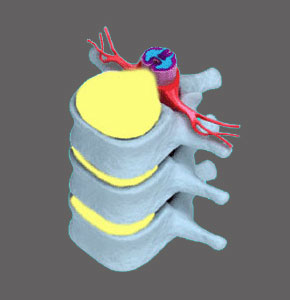
Acquired spinal stenosis encompasses the overwhelming majority of cases of central and foraminal canal narrowing in the general population. Acquired simply means that the stenosis was not in existence from birth. This means that congenital spinal stenosis is the only type of canal narrowing which does not qualify to be called acquired, since this type of stenotic change is present prior to birth.
There are many reasons for stenosis to occur and all of these are documented in the section titled causes of spinal stenosis. However, this article will investigate some of the more common reasons for people to acquire a decreased canal space as they age, including exploring how injury, degeneration and other factors can create stenosis.
Acquired Spinal Stenosis Definitions
As already mentioned, almost all stenosis is acquired, usually due to spinal injury, spinal degeneration or a combination of the 2 factors working together. Remember, injury is known to hasten the degenerative processes in the vertebral column and degeneration might also help facilitate injury in many patients.
It must be fully understood that acquiring a narrowed canal space is completely normal and expected as we get older. The simple processes of living all contribute to deterioration of the vertebral column and it is virtually universal to see a reduction in the functional size of the central and foraminal spaces by middle age.
These degenerative changes will usually continue to develop year by year, sometimes causing neurological concerns, but often remaining completely asymptomatic, despite drastic reductions in canal diameter and patency.
Acquired Spinal Canal Narrowing Exceptions
Congenital spinal canal narrowing exists prior to birth and may be caused by known or idiopathic factors. Since this type of stenosis is present at birth, it is the only variety which is not considered to be acquired.
However, this is not to say that congenital stenosis can not change or develop with age and activity, as it almost certainly will. Many cases will worsen as the patient ages, just like in a person without congenital stenosis. However, it is also possible for time or treatment to resolve areas of even problematic stenosis.
As always, patients must be evaluated on a case by case basis and no assumptions should be made as to the progression of their stenosis, without evidence.
Acquired Spinal Stenosis Details
Acquiring stenosis of the spine is part of the human experience. Most cases will not produce significant negative health issues, but some may.
Remember, the spinal cord and spinal nerves traverse the central canal and the spinal nerves traverse the foraminal canals, as well. When these spaces are decreased in patency, there is always the possibility for symptoms to occur, if the neurological structures are unable to function as designed, due to compression.
When stenosis does reach a problematic level and symptoms can be definitively linked to specific or general areas of canal impingement, then treatment is usually advised and may even be a necessity. Typically, surgery is the most effective method of resolving symptomatic stenosis, but this is not always true, depending on the location and cause of the canal narrowing.
To learn more about what to expect from a known or suspected stenosis condition in the spine, I recommend consulting with a qualified neurologist who specializes in the central nervous system. These niche medical professionals understand the complexities of the spinal cord better than most other care providers and are uniquely qualified to diagnose and treat spinal stenosis in all its many forms.
Spinal Stenosis > Spinal Stenosis Diagnosis > Acquired Spinal Stenosis





